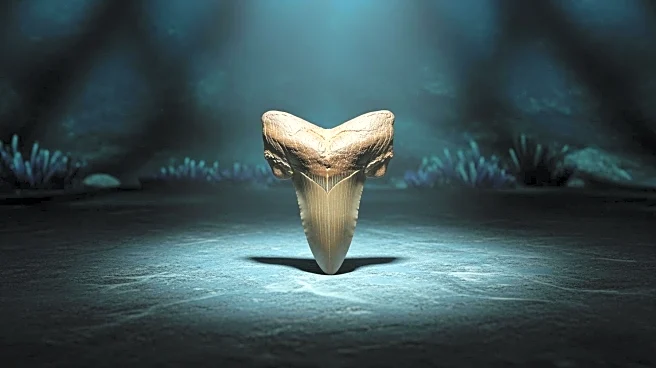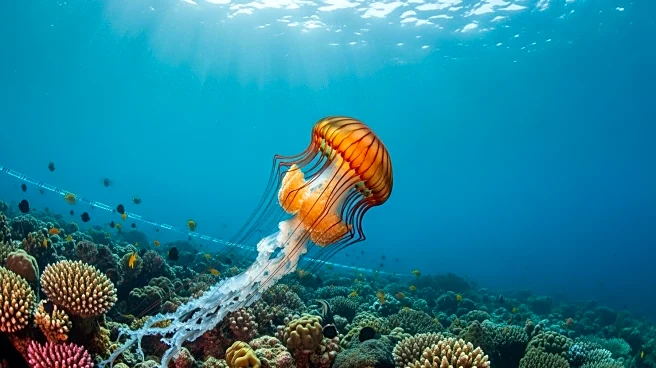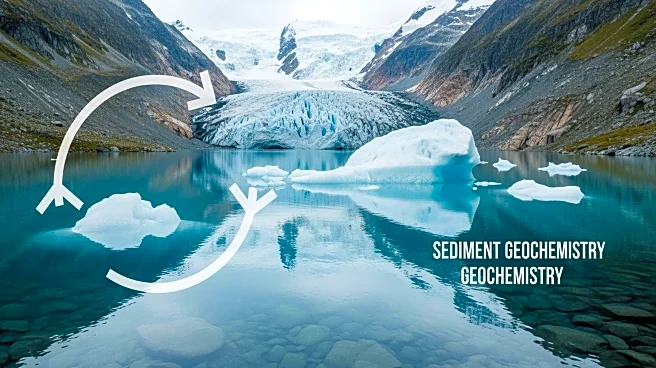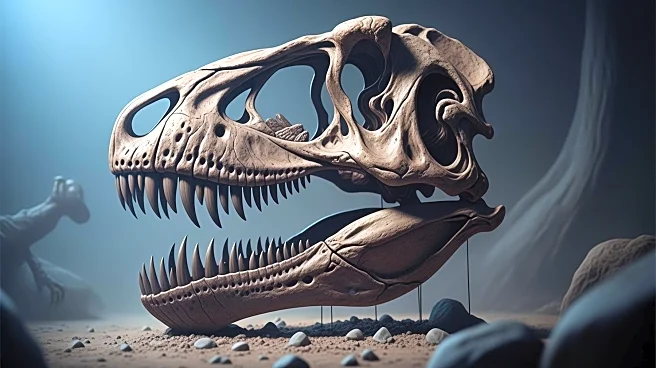What's Happening?
A recent study published in Nature explores the evolution of mega-body size in modern sharks, focusing on early gigantic lamniform species. Researchers compiled a comprehensive dataset of measurements from various lamniform shark species, analyzing the relationship
between vertebral centrum size and body length. The study utilized both intra- and interspecific models to predict body size in extinct species, considering phylogenetic relationships and allometric growth patterns. The findings suggest that early lamniform sharks marked the onset of large body sizes in modern shark evolution, with implications for understanding the ecological roles of these apex predators.
Why It's Important?
Understanding the evolution of body size in sharks is crucial for comprehending their ecological impact and role in marine ecosystems. The study provides insights into the evolutionary history of lamniform sharks, which include apex predators like the great white shark. By analyzing fossil records and modern species, researchers can better understand the factors driving body size changes and their implications for predator-prey dynamics. This knowledge is vital for conservation efforts and managing marine biodiversity.
What's Next?
Future research may focus on expanding the dataset to include more species and refining predictive models for extinct sharks. Researchers aim to explore the genetic basis of body size evolution and its ecological consequences. Continued collaboration among institutions will be essential for advancing the understanding of shark evolution and its impact on marine ecosystems.
Beyond the Headlines
The study highlights the importance of integrating fossil records with modern data to understand evolutionary processes. It underscores the role of phylogenetic analysis in predicting traits and behaviors in extinct species, offering a comprehensive view of shark evolution.













